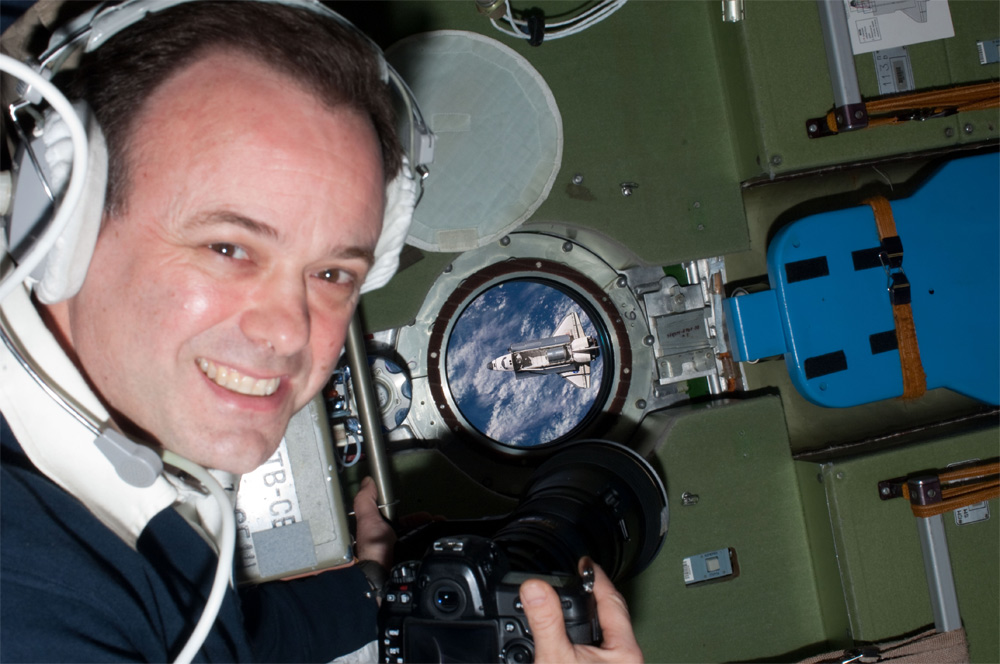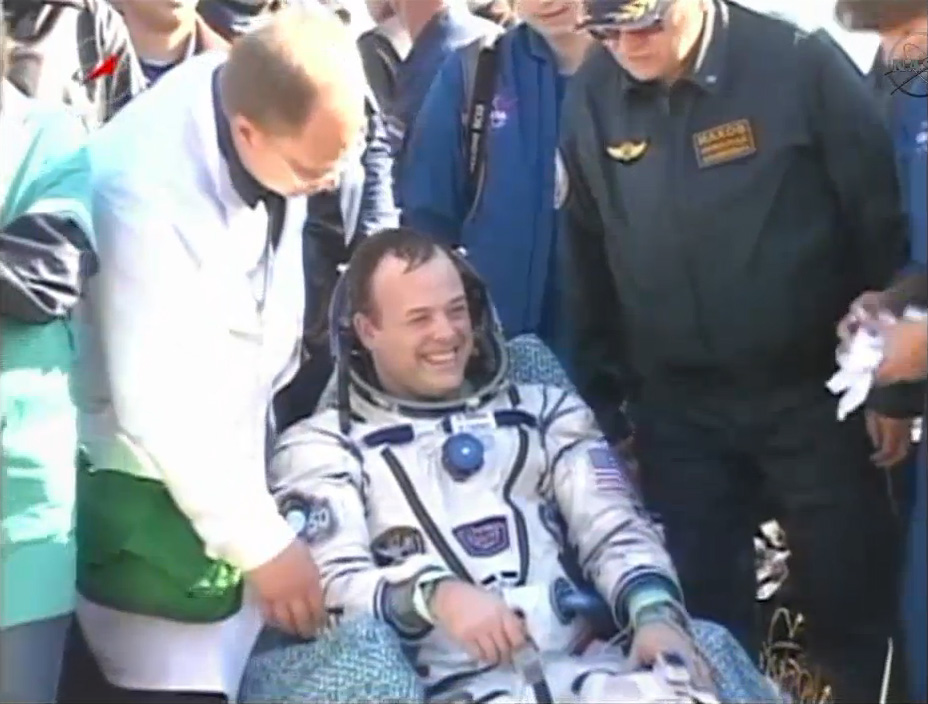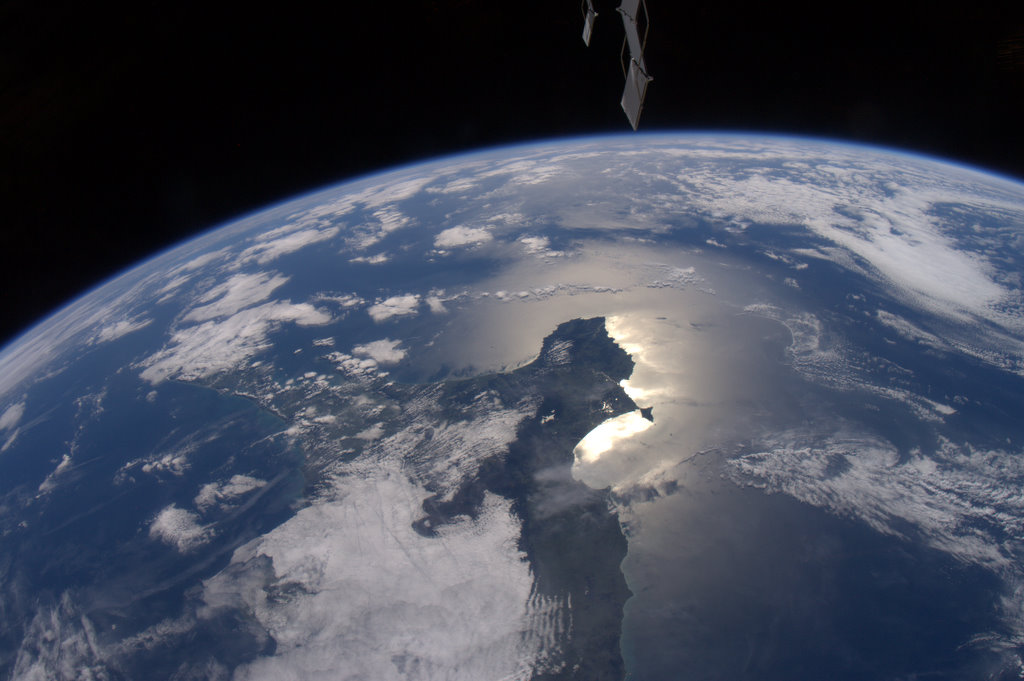Goodbye, Zero G: Astronaut Ron Garan Readapts Life on Earth

During his five and a half months in space this year, astronaut Ron Garan became a fan favorite for sharing videos and gorgeous pictures from his orbital vantage point.

Now Garan is back on the ground and getting used to walking, not floating, around.
While the transition can be tough for astronauts not used to using their muscles to strain against gravity, recent advances in exercise equipment and practices on the orbiting lab have helped crews adjust.
"It's actually gone a lot better than I anticipated," Garan told SPACE.com during an interview back on the ground. "We work really hard on orbit to do a lot of the countermeasures to help us make that transition as smooth as we can when we get back." [Earth From Space: Amazing Photos by Astronaut Ron Garan]
Most recently, Garan was one of six crewmembers on the space station's Expedition 28 mission. He launched on a Soyuz rocket with two Russian cosmonauts on April 4, and landed on the same spacecraft in Kazakhstan Sept. 16.A native of Yonkers, N.Y., Garan became a colonel in the U.S. Air Force and earned master's degrees in aeronautical science and aerospace engineering before being chosen as a NASA astronaut in July 2000. Before his most recent mission to the International Space Station, Garan flew on the STS-124 mission of the shuttle Discovery in 2008 and served as an aquanaut on NASA's underwater submarine mission NEEMO 9 in April 2006.
His mission saw a lot of excitement, including the two last space shuttle flights ever. On July 19, the space shuttle Atlantis departed the space station for the last time, after spending more than eight days docked there to deliver spare supplies and new hardware.
"We realize that we're watching the end of a chapter in our history and the start of a new chapter, and it was hard not to get emotional when we closed the hatch and said goodbye to our friends as they departed," Garan said. [Photos: Space Shuttle Leaves Station for Last Time]
Breaking space news, the latest updates on rocket launches, skywatching events and more!
The shuttle landed two days later to end NASA's 30-year reusable space plane program. Now the International Space Station bears the torch for American spaceflight, while NASA regroups and prepares to build spaceships to take astronauts to an asteroid and Mars.
Where Ron Garan, for the record, would be happy to be sent, he said.
"We're here to explore," he said. "I think that's what motivates a lot of people who got into this business in the first place. This desire to see what's beyond the next hill, to explore, to broaden our understanding of the universe."

But for now, Garan will continue to work on Fragile Oasis, the blog he started in June 2010 to chronicle his training and eventual spaceflight. While other astronauts have blogged and posted updates about their exploits on Twitter, Garan was one of the most prolific ever, and supplemented his posts with videos and jaw-dropping imagery of the Earth from space.
Fragile Oasis has also grown to include contributions from other astronauts and guest bloggers writing about space as well as the Earth. Its large community of members submit and vote on humanitarian and environmental projects around the world such as clean water initiatives, cross-cultural dialogues, and solar technology. The site's official goal is to "use the unique orbital perspective to inspire people to improve life on our planet."
"I think it's very difficult not to be moved when you look at our planet from space. You see how beautiful it is, how fragile it is," Garan said. "I think we would have a lot less problems, some of the challenges we face would be more easily solved, if everybody had that perspective, and we're trying to share that experience as best we can."
You can follow SPACE.com senior writer Clara Moskowitz on Twitter @ClaraMoskowitz. Follow SPACE.com for the latest in space science and exploration news on Twitter @Spacedotcom and on Facebook.
Join our Space Forums to keep talking space on the latest missions, night sky and more! And if you have a news tip, correction or comment, let us know at: community@space.com.

Clara Moskowitz is a science and space writer who joined the Space.com team in 2008 and served as Assistant Managing Editor from 2011 to 2013. Clara has a bachelor's degree in astronomy and physics from Wesleyan University, and a graduate certificate in science writing from the University of California, Santa Cruz. She covers everything from astronomy to human spaceflight and once aced a NASTAR suborbital spaceflight training program for space missions. Clara is currently Associate Editor of Scientific American. To see her latest project is, follow Clara on Twitter.
